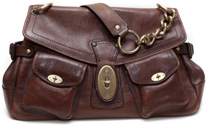How To Know When It’s Time To Liquidate Excess Inventory

If you’re a manufacturer or retailer of consumer goods—be it anything from tote bags to toaster ovens—you do your best to keep popular items available to your distributors and customers. Perhaps even tougher than picking the hot sellers? Knowing when to liquidate inventory that didn’t sell —and how to do so when the time comes. And as daunting as it might seem, it doesn’t have to be a painful process. Overstock liquidation and closeouts are part of running every successful business. The truth is, if you aren't making some mistakes you probably aren't buying enough. Closeout websites and inventory liquidators are both popular ways to buy overstock products, but the key is to stay on top of your inventory and keep product moving through the distribution system.
One of the biggest problems with unsold inventory is that it takes up valuable space. Closeouts can always be sold to liquidation companies and overstock buyers so you should really stay on top of your inventory. Shuffling returns and overstock around from warehouse to warehouse is hardly sustainable for your business considering that you need to pay drivers or shipping services, maintain storage space, and make room for new merchandise. Overstock liquidation companies are seemingly everywhere today and you can locate them with a simple Google search for closeouts, closeout websites, buy closeout inventory, discontinued inventory, liquidate Amazon FBA and sell surplus inventory. If large multi-location businesses feel the strain of these practices, small businesses feel it doubly. Even if a more established operation doesn’t have warehouses, they may at least have a back corner free where they can sell discounted scratch and dent inventory for deep discounts. A local mom-and-pop shop may not have this luxury. When space is short, businesses need to be all the more careful with how they use it and hang onto only those items that they can quickly sell at full price. Companies that buy overstock will be happy to take old inventory off your hands, but surely it will be at a big loss.
In a perfect world, businesses would never have to liquidate inventory. Winter items would sell out just in time before the new year, and customers wouldn’t move on to new fashion trends so quickly with each passing season. Alas, in this world, businesses never get stuck with old snowboard models, and out-of-style metallic crop tops. But this is fantasy and not the way surplus inventory works. Closeout websites have become popular for these very reasons – businesses need to get rid of old inventory that isn't selling, and the look for various outlets to move overstock liquidation and distressed inventory.
If you’re a manufacturer, you’ve probably explored the idea of opening outlets—that is, if you don’t have them already. These brick-and-mortar stores can be an effective way to move deeply discounted excess inventory. Additionally, shoppers are often brand fans that love a bargain. Many shoppers look to buy overstock products and closeouts at deep discounts. If you want to sell excess inventory, you have many different options today including closeout distributors, closeout wholesalers and buyers for overstock products.
When thinking about the inventory you sell–or don’t sell—it’s important to consider not just what you spend to hang onto it, but also the opportunity cost of keeping it all around. That means asking yourself the questions, “Is all the space and money that I have tied up in this slow moving inventory worth it? Could we be turning these resources into an opportunity for my company? Many times we get emotionally tied to old inventory instead of getting rid of it. This is true in the case of selling Amazon FBA stock due to high long term storage fees, shutting down a 3PL warehouse and disposing of all inventory and even when just liquidating inventory for fiscal year end.
The key is to act quickly—and intentionally. No one will want to buy last year’s snowboard, so don’t wait until the new year has already come to start selling at a discount. Keep track of which products you sell are highly seasonal or likely to be pushed out by newer models/styles. Before these items become outdated, start liquidating them. You don’t want to get stuck with these products when the new model is already out, as it will be much harder to move them. Inventory management requires constant attention and is incredibly important to your closeout business’s success. Yet, even the most successful e-commerce stores still run into problems every year getting lower-demand products off of their shelves. Following this simple guide, you will be armed with the tools you need to sell excess inventory during those slower months. Sell unwanted inventory before it becomes a bigger problem.
Dead stock is inventory that is unsalable. A business may find itself with dead stock because it ordered or manufactured too many items and then found they didn’t sell as anticipated. Dead stock can also include damaged items, incorrect deliveries, leftover closeout seasonal products or expired raw materials. Perishable items, like food or medicine, can quickly become dead stock because they usually must be discarded after a specific time. However, the definition of dead stock doesn’t include merchandise returned by customers. Selling closeouts does not have to be difficult or stressful as long as you go about liquidating everything the right way.
But products usually aren’t deemed unsalable overnight, so at what point does stock become dead? It’s often a lengthy process. First, closeouts might be considered slow-moving inventory. If they remain unsold, they become excess inventory and eventually are categorized as dead stock. For accounting purposes, any inventory that doesn’t turn over after a year is typically considered dead stock and becomes a liability. You may have excess inventory because a new model is launching soon, or maybe you closed your business and need to empty out the warehouse. Another reason may be you shut down operations and are looking to liquidate everything.
A change in the season may mean that your product line is changing as well. This is a great time to market towards the bargain hunters who are actively looking for closeout deals and to make room for seasonal stock on your site. You can always find opportunities to advertise closeout deals and surplus inventory for sale. Most buyers for excess stock will appreciate any opportunities you have, including selling excess inventory for downsizing warehouses, closing down an Amazon seller account, or just trying to salvage overstock goods in the warehouse.
AUrgency and FOMO (the fear of missing out) have a serious psychological effect on consumers, which makes flash sales a slam dunk way to convert some sales. Be sure to notify your shoppers of a limited time sale. It’s important to build anticipation, so send out emails a few days before along with reminders. Notify shoppers via social media and set up an on-site promotion to create urgency on your site. Some categories that sell well are overstock toys, closeouts of sporting goods, canceled orders from the warehouse, or other excess stock in FBA warehouses. The most obvious cost of dead stock is lost revenue. For example, if a business can’t sell 200 units of a product, each with a $100 retail price, the company theoretically will lose $20,000 in anticipated revenue.
Other costs can be significant but harder to quantify. A company’s total carrying costs can tie up much as 20% to 30% of its capital at any given time, but it may be difficult to determine how much of that is due to dead stock and overstock inventory. The longer an item is stored before selling it, the higher the item’s carrying costs become, so dead stock is the worst possible scenario for carrying costs. Because dead stock monopolizes shelf space, there can also be an opportunity cost. Resources tied up in dead inventory are not available to invest in inventory that could bring in more profits. It is always best to liquidate inventory before it becomes too big of a problem taking up valuable warehouse. Closeout wholesalers and closeout distributors are specialists in getting rid of excess inventory. They can help if you have too much merchandise in the warehouse, if you are shutting down your 3PL warehouse, or if you need to liquidate excess inventory to generate cash.
Merchandise USA is a closeout buyer for all excess inventory including closeouts of home accessories, overstock inventory of garden products and outdoor furniture, or obsolete stock of any kind. We can help if you have a shipment in a warehouse that is a canceled order or we can also help if you need to clear inventory from the warehouse and shut down your 3PL warehouse.



